On the Shores of New York’s Mysterious Island of Animal Disease
 The shore of Plum Island (all photographs by the author unless noted)
The shore of Plum Island (all photographs by the author unless noted)
Located just off the tip of Long Island’s North Fork, New York’s Plum Island measures three miles in length, and is only accessible by boat. The island has pristine, sandy beaches, and contains some of area’s finest bird habitats. The waters around the island are home to seals and several endangered species of sea turtles. The public, however, is not welcome to visit.
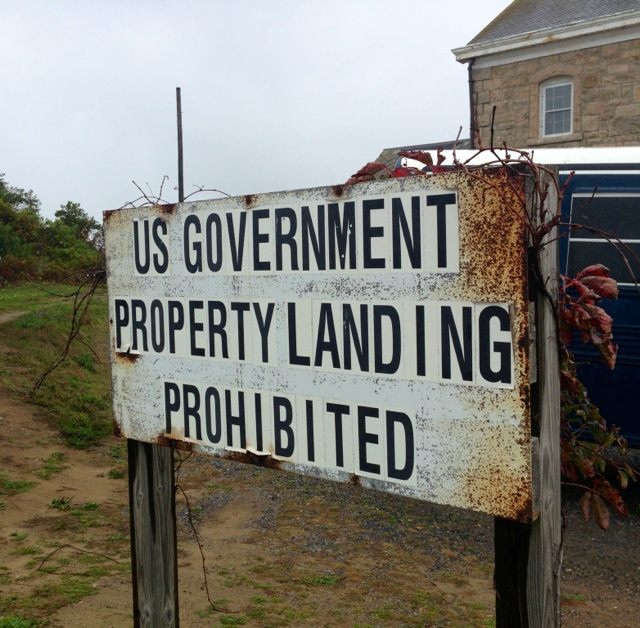 A mariner approaching the island’s shore is greeted by large signs announcing “U.S. Property - NO Trespassing.” A group of buildings are visible on the northwest side of the island, and for decades rumors have circulated about what the United States government is doing there. The official version is that the U.S. Department of Agriculture operates the Plum Island Animal Disease Center (PIADC) on the island to protect the country’s livestock population from devastating foreign diseases. Despite this seemingly straightforward explanation, conspiracy theories abound about other allegedly sinister activities, ranging from Island of Dr. Moreau-type animal breeding to germ warfare programs.
A mariner approaching the island’s shore is greeted by large signs announcing “U.S. Property - NO Trespassing.” A group of buildings are visible on the northwest side of the island, and for decades rumors have circulated about what the United States government is doing there. The official version is that the U.S. Department of Agriculture operates the Plum Island Animal Disease Center (PIADC) on the island to protect the country’s livestock population from devastating foreign diseases. Despite this seemingly straightforward explanation, conspiracy theories abound about other allegedly sinister activities, ranging from Island of Dr. Moreau-type animal breeding to germ warfare programs.
Skeptics point to strange occurrences in the area around Plum Island as evidence of government experiments run amok there, such as the discovery on a Long Island beach of the carcass of a bizarre-looking beast dubbed the Montauk Monster and the proximity of the island to the town of Lyme, Connecticut — the location of an outbreak of the tick-borne illness known today as Lyme disease.
The government has operated the research center at Plum Island since 1954, and during that time relatively few people outside of the facility’s employees and visiting scientists have set foot on the island. Recently, however, the government has softened its secretive stance and begun inviting groups to tour the island, such as local Boy Scout troops, Audubon societies, and other organizations that have an interest in the island and the surrounding environment.
In October of 2014, I had the opportunity to visit the island on behalf of Atlas Obscura as part of a group tour sponsored by Mystic Seaport, a maritime museum located on the Connecticut coast a few miles from the island.
Our group began the trip to Plum Island at a marina in Connecticut, where we caught a ride on the ferry that brings government employees back and forth to work on the island. The weather conditions that day were just short of miserable: grey skies and steady, cold rain. Greeting our group was the PIADC’s personable public affairs officer, who provided an outline of the day’s activities, as well as a list of dos and don’ts while on the island.
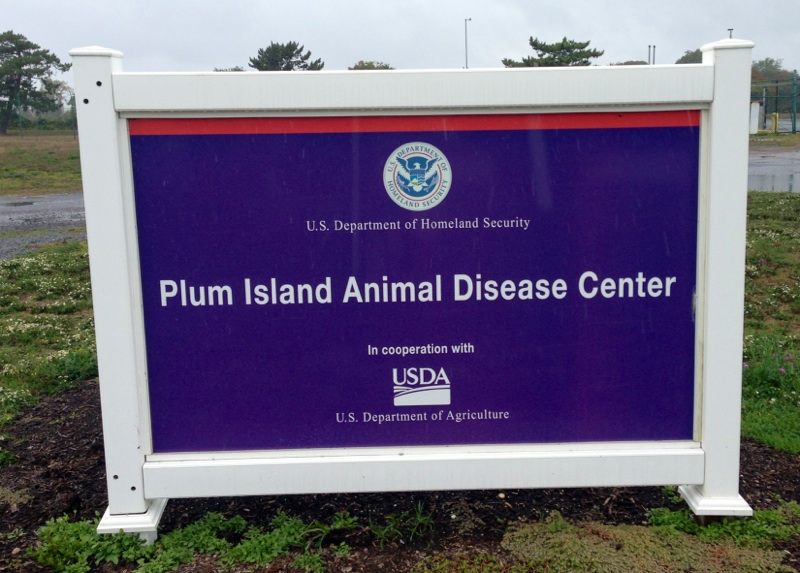
Security on Plum Island is extremely tight, and all visitors must be screened prior to the visit by the Department of Homeland Security. As a reminder of the fact that Plum Island is a secure government facility, we were accompanied throughout our visit by armed security guards. The public affairs officer explained that while photography is permitted in certain areas, we were not to take pictures of the security guards, their vehicles, or the ferry landing area. We could bring some fruit with us as a snack, but if we didn’t eat it while on the island, we couldn’t take it home. Also, while we could visit the administrative building and some of the older historic structures on the island, the animal testing labs were not part of the tour.
After about a 30-minute ferry ride, we reached the island, and were loaded on a bus which took us to the main PIADC building. Once there, we were ushered into a lecture hall where the public affairs officer gave a lengthy and extremely thorough presentation covering the history of Plum Island, the work conducted at the PIADC, and the island’s future. As it turned out, the government’s newfound willingness to provide access to the island coincided with the fact that the island is for sale. In 2009, Congress ordered that the PIADC program be transferred to a new facility in Manhattan, Kansas, in order to be closer to the center of the nation’s livestock industry. The transition of the Plum Island facility to Kansas may take as long as ten years, but eventually the island will become one of the biggest parcels of available real estate on Long Island Sound.
The recent initiative to invite groups to tour the island is also motivated in part by the recognition that the US government has not provided any counter narrative to the conspiracy theories surrounding the island’s operations. The public affairs officer quickly dismissed some of the more outrageous rumors, citing evidence that the bacteria that causes Lyme disease had been around for centuries and was recently discovered in the body of a 5,000-year-old mummy, and that the Montauk Monster was nothing more than a decomposed dog carcass.
We then learned, in significant detail, about the work performed at PIADC in researching and diagnosing animal diseases, in particular foot and mouth disease, and how this work is critical to the safety of the nation’s food supply and to our economy. Citing the huge economic impact of a 2001outbreak of foot and mouth disease in livestock in the United Kingdom, our host made a compelling case that while the work of the PIADC may be secretive, it is because the consequences of a widespread livestock disease would be devastating.
 After the presentation, we got back on the bus to tour the island. Our first stop was the final resting place of the only person known to be buried on Plum Island. In 1786, Colonel Thomas Gardiner, whose family lent its name to nearby Gardiner’s Island, died of yellow fever. Due to fears about the highly contagious virus, his family brought his body here for burial. His lonely gravestone sits in a clearing off the main road that cuts through the island.
After the presentation, we got back on the bus to tour the island. Our first stop was the final resting place of the only person known to be buried on Plum Island. In 1786, Colonel Thomas Gardiner, whose family lent its name to nearby Gardiner’s Island, died of yellow fever. Due to fears about the highly contagious virus, his family brought his body here for burial. His lonely gravestone sits in a clearing off the main road that cuts through the island.
Colonel Gardiner apparently was not too pleased to have been left alone on the island. His ghost is said to haunt the Plum Island Light. Built in 1869, the granite lighthouse was in service until 1978, when the Coast Guard replaced it with an automated light beacon. The light’s Fresnel lens is now on display at the East End Seaport Museum in Greenport, Long Island. The lighthouse was added to the National Register of Historic Places in 2011, but years of neglect have left it in need of restoration.
 The Plum Island lighthouse keeper in 1879 (via Brooklyn Museum)
The Plum Island lighthouse keeper in 1879 (via Brooklyn Museum)
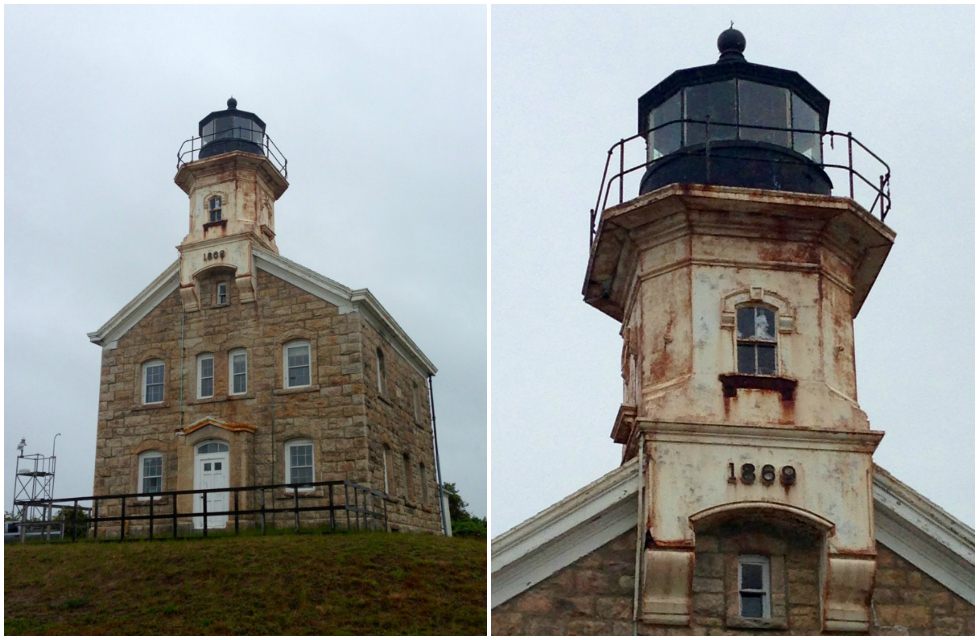
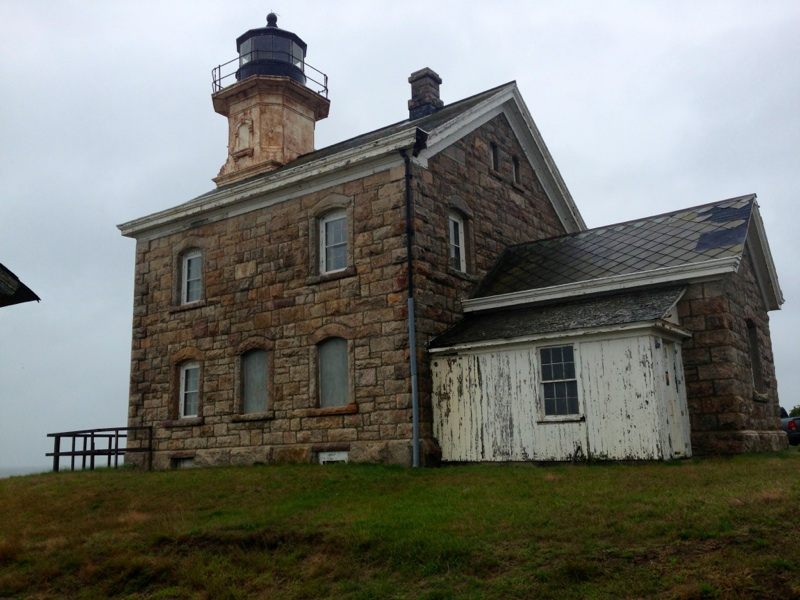
The PIADC only occupies a small portion of Plum Island, leaving much of the rest essentially as a nature preserve, undisturbed by development or other human interference. Our visit included a peaceful inland pond and a section of rocky shore where seals were swimming out in the waves.
During the Spanish American War, the U.S. Army constructed Fort Terry on the island and several of its buildings are still standing. The fort served as a part of the nation’s coastal defense system up through World War II. The U.S. military declared the fort surplus in 1948, but some of its buildings continued to be utilized when the PIADC was established in 1954.
One rumor has it that after the war, the American government employed former Nazi scientists to assist with a germ warfare program on the island. While the Nazi involvement has never been confirmed, the island did serve as a bio-weapons research facility until President Richard Nixon ordered the lab closed in 1969. One of the buildings where this program was conducted is known as Building 257. Built in 1911, originally for storing torpedoes and mines, this building has been identified by many conspiracy theorists as the location of the more notorious alleged government experiments conducted on the island. Disappointingly, this building was not a stop on our tour and we had to content ourselves with viewing it through the window of the bus.


In our final stop, we did get a closer look at some of the other buildings at Fort Terry, which are in various stages of ruin and overgrown with vegetation. We visited one of the fort’s gun batteries, now little more than crumbling concrete and brick. The large troop barracks was the most prominent building, and looks out onto a beautiful beach that rivals any of those found on Long Island. Our group wound down the tour with a stroll along this beach where on a typical day, the only visitors to be seen anywhere would be seagulls.
With the government’s planned sale of Plum Island, interest in its future has increased. Several environmental groups have raised concerns that the island could be sold to a commercial developer seeking to build a high end resort there. The town of Southold, New York, which has jurisdiction over the island, has zoned it non-residential, but what use will ultimately be made of the island is uncertain. For now, the mystery and intrigue surrounding Plum Island endures.
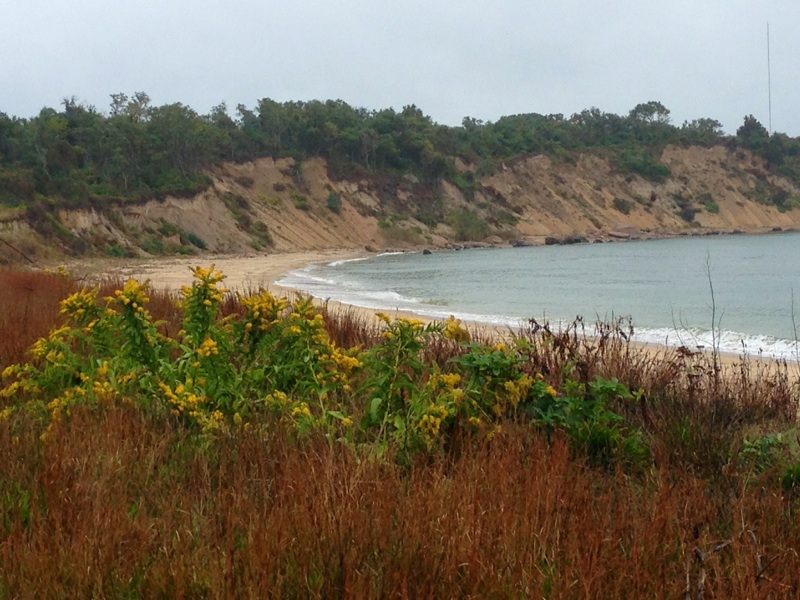
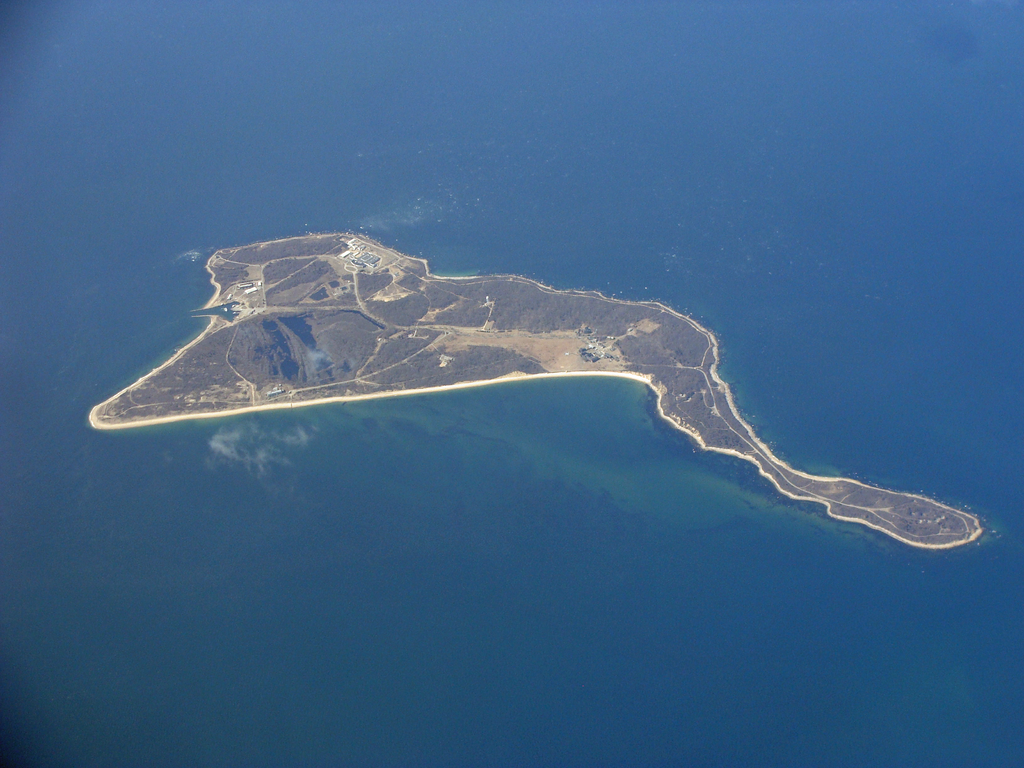 Aerial view of Plum Island (photograph by kyselak/Wikimedia)
Aerial view of Plum Island (photograph by kyselak/Wikimedia)












Follow us on Twitter to get the latest on the world's hidden wonders.
Like us on Facebook to get the latest on the world's hidden wonders.
Follow us on Twitter Like us on Facebook